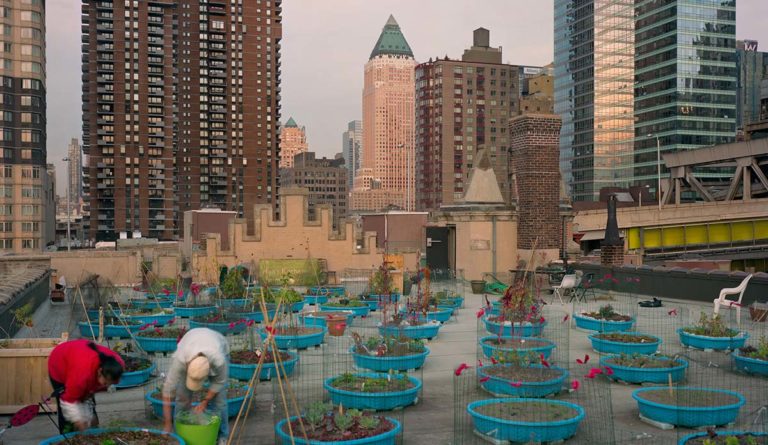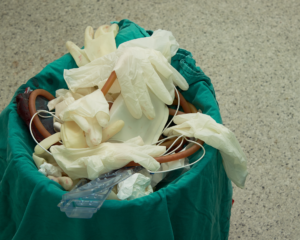Design Thinking for Public Health
Five Borough Farm Project, an initiative launched in 2009, brought urban farmers, designers, and policy makers together, using design thinking to expand urban agriculture in New York City.

Read Time: 4 minutes
Published:
What do urban farmers, designers, and policy makers have in common? And why does the answer matter for public health?
These disparate groups were participants in the Five Borough Farm Project, an initiative launched in 2009 to use design thinking to expand and justify spaces for urban agriculture in New York City. The project, which was developed by the nonprofit, Design Trust for Public Space, brought together experts in design, graphics, policy, and metrics to devise a framework to support citywide farming activities. The team started with a land use perspective. Yet, design thinking led them to identify a host of public health concerns—including access to safe spaces, food-health literacy, and the equitable distribution of resources across race and class—as essential to the future of urban agriculture in New York.
Groups ranging from healthcare systems to global nonprofits are now adopting design to better understand what “customers” really want.
Design thinking (also called human centered design) is typically recognized as an approach that utilizes elements of the designer’s toolbox to arrive at innovative solutions to challenges in non-design sectors. Companies like IDEO, which focus on creating change through design, have distilled key concepts into teachable phases often framed as: inspiring new thinking by discovering what people really need; pushing past obvious solutions to get to breakthrough ideas; building rough prototypes to learn how to make ideas better; and crafting a human story to inspire others towards action.
Definitions of design thinking vary. But a few core concepts remain at its heart: empathy with the end-users of a product or service, a focus on their needs and contexts, and tolerance for ambiguity and failure.
Product designers and marketing experts have long used similar approaches. Yet, groups ranging from healthcare systems to global nonprofits are now adopting design to better understand what “customers” really want.
For the Five Borough Farm Project, those “customers” were the groups doing the farming. To gain insight into their needs, the project team conducted over 60 site visits and convened more than 90 farmers. What quickly stood out was the unexpected diversity of urban farmers, who ranged from entrepreneurs with high tech ideas to commercial farmers and community gardeners.
“Lots of press is going to urban farmers who are young and affluent,” explained Nevin Cohen, PhD, the project’s policy expert. “But we talked to families who have been farming the city for generations.”
Cohen credits design thinking for the team’s ability to look beyond superficial perceptions.
The team issued 30 public policy recommendations that reflected the vastly different needs found among the city’s farmers.
With a more conventional approach, he said, they might have examined urban agriculture policies in other cities and hit upon guidance like longer land tenures. Instead, the team issued 30 public policy recommendations that reflected the vastly different needs found among the city’s farmers. They also developed metrics that linked urban farming to health, social, economic, and ecological benefits, especially for underserved communities. And they used tools like info-graphics, videos, and photography to better engage policy makers in their findings.
Design thinking is frequently touted as an important public health tool. The Robert Wood Johnson Foundation and the Public Health National Center for Innovation are among its champions. Yet, little research has examined its application to health. A scoping review of published and grey literature on design for health by Bazzano et al., was published last November. In particular, the article cited the lack of a consistent definition of design thinking as an obstacle to evaluating its value in health-related contexts.
Nonetheless, in the Five Borough Farm Project, design was critical to linking public health to citywide farming policies in New York City.
“We still have a long way to go,” acknowledged Cohen. “But we’re making a conscious effort to ensure a more healthy and just urban agriculture system.”

Feature image: Hell’s Kitchen Farm Project, Hell’s Kitchen, Manhattan (detail) Photo © Rob Stephenson for the Design Trust for Public Space.
Image in article: Seeds to Feed Rooftop Farm, Crown Heights, Brooklyn. Photo © Rob Stephenson for the Design Trust for Public Space.



